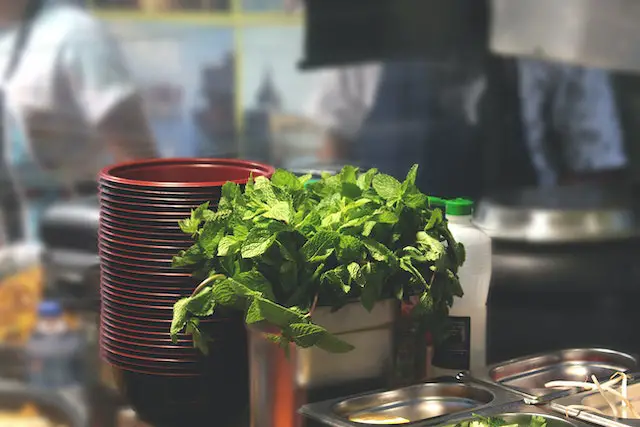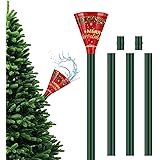Have you ever noticed your mint plant looking a little worse for wear? If you’ve noticed that your mint plant is wilting, you’re not alone. Wilting mint plants are a common problem for many gardeners, but luckily, there are steps you can take to bring them back to life.
In this blog post, I’ll discuss the causes of my mint plant’s wilting, as well as how to take care of it and prevent it from happening in the future.
Check the Soil
If your mint plant is wilting, the first thing you should do is check the soil it’s in. Does the soil feel dry to the touch? If so, the soil may need to be watered more frequently.
Or, it could be that the soil has become too compacted over time. To remedy this, use a spade or garden fork to loosen the soil around your plant.
Another factor to consider is soil pH. Mint prefers slightly acidic soil with a pH between 6 and 7. If your soil is too alkaline or too acidic, this could be why your plant is wilting. Use a soil test kit to determine if the pH needs to be adjusted before you start adding amendments to the soil.
Finally, make sure your plant isn’t overcrowded. Mint can easily get root-bound if left in a pot for too long without proper repotting. If you see roots growing out of the drainage holes of your pot, it’s time to repot your mint in fresh soil. Make sure to take extra care when transplanting your mint as the roots are quite fragile.
Once your soil situation has been addressed, inspect the leaves of your plant for any signs of pests or disease. Check for tiny white spots which could indicate an infestation of mealybugs or scale insects. These pests can weaken plants by sucking their juices and excreting honeydew, which can lead to fungal diseases like powdery mildew.
If the problem turns out to be disease, try using a fungicide like neem oil to treat it. Make sure to follow all directions on the label carefully! Once the disease has been taken care of, provide some extra TLC to help your mint recover by providing ample sunlight and water.
Prune away any dead or damaged leaves as they won’t be able to recover even after treatment. With some luck, your mint plant will make a full recovery!
Also Read: Why Does Mint Taste Bitter?
Check for Pests
One of the most common causes of a wilting mint plant is pests. To determine if pests are causing your plant’s wilting, take a look at the leaves and stems. If you notice any small, dark spots on the leaves or stems, these could be signs of an infestation. You may also see webbing or tiny bugs on the plant.
To get rid of pests, try pruning off any affected leaves or stems and treating the plant with an insecticidal soap or neem oil. Be sure to follow all safety precautions and label instructions when using insecticidal soaps or neem oil. If the problem persists, you may need to contact a pest control expert for further assistance.
Additionally, make sure that the mint plant has enough space in its pot. Crowding can cause stunted growth and even lead to wilting in some cases.
If crowding is not an issue, then check to see if your pot has adequate drainage holes. Plants will wilt if their roots sit in soggy soil for too long. If there aren’t enough drainage holes in the pot, consider repotting the mint in a larger pot that has better drainage capabilities.
Finally, ensure that the mint plant has access to enough sunlight. Most herbs like mint require around 6 hours of direct sunlight each day. If it isn’t receiving enough sun exposure, move it to a sunnier spot in your garden or greenhouse. Taking steps like these can help prevent your mint from wilting in the future.
Check the Watering Schedule
Watering your mint plant is a crucial part of keeping it healthy. The first thing you should do when your mint plant is wilting is to check its watering schedule. Depending on the type of mint you have, it may require more or less water. Here are some general guidelines:
• Water mint plants regularly. Check the soil and water when it feels dry about 2 inches deep.
• For best results, water your mint plants in the morning, so the leaves can dry quickly and reduce the chance of disease.
• Water your mint plants with room temperature water and avoid over-watering. Over-watering will cause root rot, which can lead to wilting.
• If you notice that your mint plant is wilting, you can add a bit more water to the soil. This may help revive the plant.
• Consider using a moisture meter to monitor the soil moisture level and ensure you are providing enough water for your mint plants.
By following these simple steps, you can ensure that your mint plant gets the right amount of water to stay healthy and vigorous.
Additionally, if you find that your mint plant is wilting even after adjusting your watering schedule, consider checking the pH balance of your soil. The ideal pH range for mint is between 5.5 and 7.0; if the pH level of your soil falls outside this range, consider adding amendments such as lime or sulfur to adjust the pH balance accordingly.
You can also make sure your mint has access to adequate sunlight by moving it to a brighter spot if necessary. Finally, make sure to feed your mint plant with an appropriate fertilizer at least once every two weeks; fertilizing your plant helps give it essential nutrients and keeps it growing strong.
Also Read: About Tower Garden Mineral Blend Alternatives
Check the Light Exposure
If your mint plant is wilting, it may be due to not enough light exposure. Mint plants prefer indirect sunlight but can tolerate some direct sunlight. Check the area your mint plant is in and see if it is getting enough light exposure.
If it isn’t, try moving it to an area with more light. If you’re indoors, try using a grow light or other supplemental lighting sources. Mint plants need a minimum of 8 hours of light each day. Make sure that there are no obstacles between the plant and the light source, such as curtains or furniture.
If you find that the plant is getting too much direct sunlight, move it to an area with more indirect light. If the light exposure still doesn’t seem to be enough, consider adding a grow light to ensure that your mint plant has sufficient light exposure.
Prune the plant
If your mint plant is wilting, one possible solution is to prune the plant. Pruning is an important part of keeping your mint healthy and vibrant. It helps encourage new growth, as well as make sure your mint does not become overgrown or leggy.
Start by removing any dead or damaged leaves and stems. Then, cut back any stems that are growing in an odd direction or that are overly long. You want to keep the plant neat and tidy, so don’t be afraid to do some trimming.
When you are done pruning, use a pair of sterilized scissors or shears to avoid spreading any diseases. This will also help prevent your plant from becoming infected by pests.
Pruning can be done on a regular basis throughout the year, but it is especially important when the plant is wilting. Doing this regularly will keep your mint looking neat and attractive. Just be careful not to over-prune, as this can damage the plant.
Frequently Asked Questions (FAQs)
Wilting is usually a sign of stress, and there are several potential causes. The most common causes are too much or too little water, inadequate light exposure, infestation by pests, or poor soil quality.
The amount of water your mint plant needs depends on the time of year, the temperature, and the type of soil. Generally, your mint plant should be watered when the top 1-2 inches of soil is dry. Check the soil regularly to ensure it does not become overly dry or soggy.
Mint plants prefer bright light, but can tolerate partial shade. If you’re unsure how much light your plant is getting, place it near a south or west-facing window and monitor how quickly the soil dries.
Aphids, spider mites, and thrips can all cause damage to mint plants. To get rid of these pests, you can use insecticidal soap or neem oil.
Pruning is an important part of keeping your mint plant healthy and productive. Start by removing any dead or damaged leaves, then snip off any branches that have grown too long. Make sure to use sharp scissors and cut at a 45-degree angle.
Conclusion
It’s unfortunate when my mint plant is wilting, but the good news is that there are steps you can take to help save your beloved herb. Be sure to check the soil, look for pests, adjust your watering schedule, and monitor the light exposure of your mint plant. Pruning may also help revive a wilting plant.
If all else fails, you may need to start fresh with a new mint plant. In any case, it’s important to remain observant and take proactive steps to ensure that your mint plant can make a full recovery.
Auto Amazon Links: No products found.
Perfect Plants Christmas Tree Saver 8oz. | Easy Use Xmas Tree Preserver Food | Have Healthy Green Christmas Trees All Holiday Season
$9.97 (as of December 3, 2025 00:36 GMT +00:00 - More info- Product prices and availability are accurate as of the date/time indicated and are subject to change. Any price and availability information displayed on [relevant Amazon Site(s), as applicable] at the time of purchase will apply to the purchase of this product.
Kaiedos Christmas Tree Watering Funnel - 39 Inch Funnel, Reusable Design, Makes Watering Your Live Tree a Snap!
$14.99 (as of December 3, 2025 00:36 GMT +00:00 - More info- Product prices and availability are accurate as of the date/time indicated and are subject to change. Any price and availability information displayed on [relevant Amazon Site(s), as applicable] at the time of purchase will apply to the purchase of this product.
Christmas Tree Watering Funnel, Real Christmas Tree Water Long Funnel About 40 Inch, Trees Watering System for Water Indoor Outdoor
$15.99 (as of December 3, 2025 00:36 GMT +00:00 - More info- Product prices and availability are accurate as of the date/time indicated and are subject to change. Any price and availability information displayed on [relevant Amazon Site(s), as applicable] at the time of purchase will apply to the purchase of this product.
IPOOLTENG Christmas Tree Watering Funnel 3 Tube 1 Funnels 40 Inch - 3 Section Plastic Christmas Tree Funnel Waterer, Long Funnels for Watering Trees, Best Gifts for Your Parents to Water Tree
$15.53 (as of December 3, 2025 00:36 GMT +00:00 - More info- Product prices and availability are accurate as of the date/time indicated and are subject to change. Any price and availability information displayed on [relevant Amazon Site(s), as applicable] at the time of purchase will apply to the purchase of this product.
1 Pack Christmas Tree Watering Funnel System, 44 Inch Christmas Tree Watering Stick with Adjustable 3-Section Design, Reusable & Spill-Free, Xmas Plant Waterer Tool for Indoor and Outdoor
$16.99 (as of December 3, 2025 00:36 GMT +00:00 - More info- Product prices and availability are accurate as of the date/time indicated and are subject to change. Any price and availability information displayed on [relevant Amazon Site(s), as applicable] at the time of purchase will apply to the purchase of this product.
Cuisinart 6.5" Cast Iron Smashed Burger Press, Round Flat Edge Grill Press for Crispy Smash Burgers, Burger Tool for Grill and Griddle Accessories, for BBQs and Tailgates
$9.99 (as of November 30, 2025 15:21 GMT +00:00 - More info- Product prices and availability are accurate as of the date/time indicated and are subject to change. Any price and availability information displayed on [relevant Amazon Site(s), as applicable] at the time of purchase will apply to the purchase of this product.
Muddy Mat® Shown on TV Super Absorbent Microfiber Dog Door Mat for Muddy Paws, Non-Slip Washable Pet Rug, Quick Dry Chenille Entryway Carpet, Machine Washable Indoor Outdoor mat, Grey 30"x19"
$18.78 (as of November 30, 2025 15:21 GMT +00:00 - More info- Product prices and availability are accurate as of the date/time indicated and are subject to change. Any price and availability information displayed on [relevant Amazon Site(s), as applicable] at the time of purchase will apply to the purchase of this product.
Zevo Flying Insect Trap Official Refill Cartridges - Fits Both Zevo Trap & MAX Indoor Fly Trap - Authentic Trap+Lock Technology to Catch Gnats, House & Fruit Flys (4 Official Refill Cartridges)
$14.97 (as of November 30, 2025 15:21 GMT +00:00 - More info- Product prices and availability are accurate as of the date/time indicated and are subject to change. Any price and availability information displayed on [relevant Amazon Site(s), as applicable] at the time of purchase will apply to the purchase of this product.
ThermoPro TP16 Large LCD Digital Cooking Food Meat Thermometer for Smoker Oven Kitchen BBQ Grill Thermometer Clock Timer with Stainless Steel Temperature Probe
$17.99 (as of November 30, 2025 15:21 GMT +00:00 - More info- Product prices and availability are accurate as of the date/time indicated and are subject to change. Any price and availability information displayed on [relevant Amazon Site(s), as applicable] at the time of purchase will apply to the purchase of this product.
TERRO Ant Killer Bait Stations T300B - Liquid Bait to Eliminate Ants - Bait System - 12 Count Stations for Effective Indoor Ant Control
$10.86 (as of November 30, 2025 15:21 GMT +00:00 - More info- Product prices and availability are accurate as of the date/time indicated and are subject to change. Any price and availability information displayed on [relevant Amazon Site(s), as applicable] at the time of purchase will apply to the purchase of this product.











